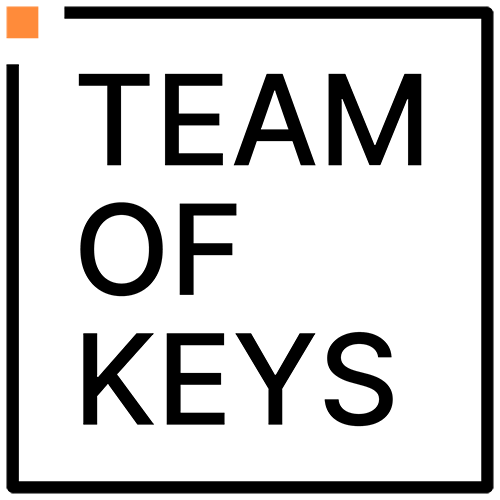The gaming industry has grown at an unprecedented pace over the past decade, transforming from a niche hobby into a multi-billion-dollar global phenomenon. But behind every successful game lies a smart monetization strategy. Whether you’re an indie developer or a major studio, choosing the right revenue model is crucial to maximizing profits while keeping players engaged. In this blog, we’ll explore the 5 best game monetization strategies that can drive revenue.
1. Subscription Model
The subscription model is one of the most stable revenue streams for games. Players pay a recurring fee, monthly, quarterly, or annually, to access premium features, exclusive content, or the full gaming experience. Services like Xbox Game Pass, Apple Arcade, and PlayStation Plus have demonstrated how lucrative this approach can be.
Why it works:
- Ensures consistent revenue for developers.
- Encourages long-term player engagement.
- Can include perks such as early access to updates, bonus content, or ad-free gameplay.
Pro Tip: Offer tiered subscription plans to cater to casual players and hardcore gamers alike. For example, a basic plan could include access to standard content, while a premium plan unlocks exclusive levels, skins, or multiplayer advantages.
2. Loot Boxes
They are randomized packs containing items, such as weapons, skins, or power-ups. Players purchase them with real money or currency, not knowing exactly what they will receive. This model taps into the thrill of chance, similar to a lottery system.
Why it works:
- Highly profitable when designed ethically.
- Encourages frequent purchases due to the unpredictability of rewards.
- Can be combined with cosmetic or functional items to appeal to different player types.
Pro Tip: Transparency is key. Some regions now require disclosing the probability of items in loot boxes. Focus on cosmetic rewards rather than game-play advantages to avoid pay-to-win backlash.
It allows players to buy virtual coins, gems, or tokens that can be exchanged for items, skins, or boosts. This model is extremely popular in Mobile Game Development Services and free-to-play titles.
3. In-Game Advertising
It allows developers to earn money by integrating ads directly into the gaming experience. This model is particularly popular in free-to-play gaming, where players may not want to pay up front. Ads can take multiple forms, including:
- Banner ads in menus or loading screens.
- Video ads that players can watch for rewards.
- Sponsored content or branded items within the gaming world.
Why it works:
- Generates revenue without charging players directly.
- It can enhance the game experience when implemented naturally.
- Works well for mobile and casual gaming with a broad audience.
Pro Tip: Avoid overloading it with ads, as this can lead to player frustration. Reward-based ads, where players watch videos to earn in-game currency or bonuses, are a highly effective compromise.
4. Additional Game Content
Offering additional game content (also known as downloadable content or DLC) is another powerful monetization strategy. This model lets players expand their gaming experience by purchasing new levels, characters, missions, or storylines.
Why it works:
- Gives players a reason to return to the game even after completing the base content.
- Provides developers with recurring revenue without forcing constant ad exposure.
- Encourages a community-driven approach, as players can discuss and share new content experiences.
Pro Tip: Ensure that DLC feels meaningful. Free content updates can maintain goodwill, while paid expansions should offer unique experiences that justify the price.
5. In-Game Currency
It allows players to buy virtual coins, gems, or tokens that can be exchanged for items, skins, or boosts. This model is extremely popular in mobile games and free-to-play titles.
Why it works:
- Offers players flexibility in how they spend money.
- Creates multiple micro-transaction opportunities.
- Encourages repeat engagement, as players often purchase currency in small amounts multiple times.
Pro Tip: Balance your economy carefully. Ensure that currency can also be earned through gameplay to avoid alienating non-paying players. Offering bundles, discounts, or limited-time events can drive additional revenue while keeping players happy.
Why Choose Team of Keys for Game Development Services
Team of Keys delivers innovative and immersive game development solutions made to your vision. With expertise in advanced technologies, creative storytelling, and seamless gameplay design, we craft engaging experiences that captivate players. Our commitment to quality, timely delivery, and player-focused design ensures your game stands out in a competitive market.
Choosing the Right Monetization Strategy
The key to successful game monetization lies in understanding your audience and designing strategies that enhance rather than hinder the player experience. Often, the most profitable gaming uses a hybrid approach, combining multiple revenue models. For instance, you might offer a subscription for premium players, while free players access games with ads and optional purchases.
Examples of hybrid models:
- Free-to-play games with in-game currency and occasional loot boxes.
- Subscription-based gaming that also sells cosmetic DLC or exclusive items.
- Mobile gaming with optional ad-free experiences through subscription plans.
By strategically mixing these models, developers can cater to different types of players, maximize revenue, and build a loyal community.
Conclusion
Monetizing a game effectively requires more than just creating great gameplay; it’s about understanding your audience, selecting the right revenue model, and balancing profitability with player satisfaction. These five proven strategies can help developers achieve long-term success. When done thoughtfully, monetization doesn’t just generate revenue; it enhances the overall gaming experience, keeping players engaged and excited for what’s next.











